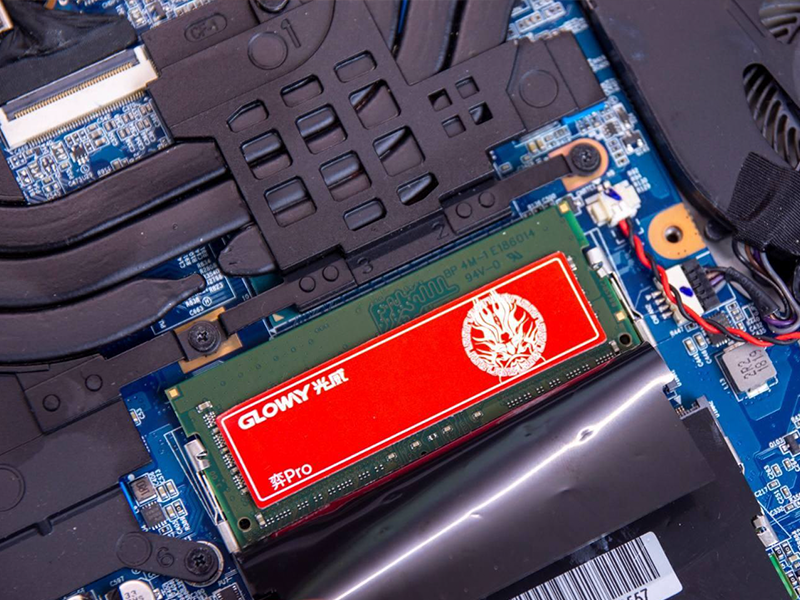গেমিং ল্যাপটপের পারফরম্যান্স বাড়ানো প্রথমে দেখতে কঠিন মনে হলেও আসলে এটি সম্পূর্ণ সম্ভব, যদি আপনি কী করবেন তা জানেন। এই গাইডটি আপনাকে পদক্ষেপে পদক্ষেপ সেটি বুঝিয়ে দেবে, এমনভাবে যাতে আপনি ঝুঁকি ছাড়াই আপনার ল্যাপটপের পারফরম্যান্স আপগ্রেড করতে পারবেন।
প্রথমে আপনি কী নিয়ে কাজ করছেন তা জেনে নিন
আপনি আপগ্রেডের পথে না হাঁটা পর্যন্ত আপনার ল্যাপটপ কী পরিচালনা করতে পারে সে সম্পর্কে ধারণা রাখা আবশ্যিক। গেমিং মডেলগুলির প্রস্তুতকারক কর্তৃক নির্ধারিত হার্ডওয়্যারের সীমা থাকে। স্পেসিফিকেশনগুলি পরীক্ষা করুন: CPU, GPU, RAM এবং সংরক্ষণের ধরন। এই তথ্যটি আপনাকে বলে দেবে যে কোনটি পরিবর্তন করা যাবে এবং কোনটি নয়। RAM এবং সংরক্ষণ হল সাধারণত আপগ্রেডের জন্য প্রচলিত বিষয়, যেখানে CPU এবং GPU প্রায়শই মাদারবোর্ডের সাথে সোল্ডার করা থাকে, যা প্রতিস্থাপনের অযোগ্য হয়ে দাঁড়ায়।
RAM দিয়ে গতি বাড়ান
আরও বেশি RAM যোগ করা প্রায়শই পারফরম্যান্স বাড়ানোর দ্রুততম উপায়। অতিরিক্ত মেমরি আপনার ল্যাপটপকে বেশি ব্যাকগ্রাউন্ড কাজ পরিচালনা করতে এবং মেমরি খরচকারী শিরোনামগুলির সাথে মসৃণ গেমপ্লে সম্পাদন করতে সক্ষম করে। এমন ল্যাপটপ খুঁজুন যা ডুয়াল-চ্যানেল RAM সমর্থন করে - যদি আপনার কাছে ইতিমধ্যে একটি স্টিক থাকে, তাহলে সেরা বুস্টের জন্য একই আকার এবং সময়কালের দ্বিতীয় মডিউলটি সংযুক্ত করুন। নতুন মেমরি যেন মাদারবোর্ডের সাথে সামঞ্জস্যপূর্ণ হয় এবং ল্যাপটপের সর্বোচ্চ RAM সীমা অতিক্রম না করে তা সবসময় দুবার পরীক্ষা করুন।
একটি SSD-এর জন্য আপনার হার্ড ড্রাইভ পরিবর্তন করুন
পুরানো হার্ড ড্রাইভের জায়গায় সলিড-স্টেট ড্রাইভ (এসএসডি) ব্যবহার করা আপনি যে কোনও আপগ্রেডের মধ্যে সেরা পদক্ষেপ। এসএসডি ডেটা পড়া এবং লেখার ক্ষেত্রে অনেক দ্রুত, যার মানে আপনার ল্যাপটপ দ্রুত বুট হয় এবং গেমগুলি প্রায় তাৎক্ষণিকভাবে লোড হয়। 2.5-ইঞ্চি বা এম.২ ফরম্যাটের মধ্যে কোনও ড্রাইভ খুঁজুন এবং দেখুন যে আপনি SATA বা NVMe সংযোগ চান কিনা। এছাড়াও, পুরানো ড্রাইভটি এসএসডিতে ক্লোন করা আপনার গেম এবং ফাইলগুলি পুনরায় ইনস্টল না করেই স্থানান্তর করতে দেয়। এই একক আপগ্রেডটি আপনার দৈনিক গেমিংয়ের অভিজ্ঞতা উন্নত করতে পারে।
এটি দ্রুত রাখতে ল্যাপটপটি ঠান্ডা করুন
যখন আপনি পারফরম্যান্স বাড়ান, আপনার ল্যাপটপ উত্তপ্ত হয়ে ওঠে - এবং অতিরিক্ত তাপ এটিকে ধীর করে দিতে পারে বা হার্ডওয়্যারকে ক্ষতি করতে পারে। ভাল কুলিং পরিকল্পনা আবশ্যিক। চেসিসের মধ্যে দিয়ে অতিরিক্ত বাতাস সরানোর জন্য একটি কুলিং প্যাড দিয়ে শুরু করুন। যদি আপনি তা করতে প্রস্তুত থাকেন, তবে CPU এবং GPU-তে পুনরায় মানসম্পন্ন থার্মাল পেস্ট প্রয়োগ করে তাপমাত্রা কমানো যেতে পারে। ভেন্ট এবং ফ্যানগুলি পরিষ্কার করা মনে রাখবেন না। একটি পরিষ্কার সিস্টেম ঠান্ডা চলে, তাই আপনার আপগ্রেডগুলি যেমনটি উদ্দিষ্ট তেমন পারফরম্যান্স প্রদর্শন করে।
ভাল পারফরম্যান্সের জন্য সফটওয়্যার অপ্টিমাইজেশন
আপনার গেমিং ল্যাপটপ দ্রুত করার জন্য সবসময় নতুন হার্ডওয়্যারের প্রয়োজন হয় না - বুদ্ধিমান সফটওয়্যার পরিবর্তনগুলি অদ্ভুত কাজ করতে পারে। প্রথমে নিশ্চিত করুন যে আপনার অপারেটিং সিস্টেম এবং ড্রাইভারগুলি তাজা করা হয়েছে। প্রস্তুতকর্তারা প্রায়শই আপডেটগুলি প্রেরণ করেন যা শুধুমাত্র বাগ ঠিক করে না বরং ফ্রেম রেটগুলিও বাড়িয়ে দেয়। পরবর্তীতে, আপনি যে সমস্ত পটভূমি প্রোগ্রাম এবং পরিষেবাগুলি প্রয়োজন বলে মনে করেন না সেগুলি বন্ধ করুন। পিছনে কম গোলমাল চলছে মানে আপনার প্রিয় গেমের জন্য আরও বেশি RAM এবং CPU শক্তি। অবশেষে, আপনার নির্দিষ্ট ল্যাপটপ হার্ডওয়্যারের জন্য সেরা সেটিংসগুলি স্বয়ংক্রিয়ভাবে নির্ধারণ করতে গেম অপ্টিমাইজেশন সফটওয়্যার ব্যবহার করুন।
শিল্পের প্রবণতা এবং ভবিষ্যতের দিকনির্দেশনা
গেমিং প্রযুক্তি দ্রুত এগিয়ে যাচ্ছে, এবং এর অর্থ হল উচ্চ কার্যক্ষমতা সম্পন্ন ল্যাপটপের চাহিদা আগের চেয়েও বেশি। ডিডিআর5 র্যাম এবং পিসিআই এক্সপ্রেস 4.0 এসএসডি এর মতো উপাদানগুলি সাধারণ হয়ে উঠছে, যা গেমারদের নতুনতম গেমগুলি চালানোর জন্য শক্তিশালী ল্যাপটপের খোঁজে ঠেলে দিচ্ছে—প্রায়শই সর্বশেষ গ্রাফিক্স এবং ফ্রেম সেটিংস-এর জন্য। একইসাথে, ক্লাউড গেমিং এবং গেম স্ট্রিমিংয়ের উত্থান ভবিষ্যতের ল্যাপটপ তৈরির পদ্ধতিকে পুনর্গঠিত করতে পারে। প্রস্তুতকারকরা অত্যন্ত পাতলা ডিজাইন এবং দুর্দান্ত ব্যাটারি জীবনকে অগ্রাধিকার দিতে পারেন যদিও আমরা যে শক্তির প্রয়োজন চাই তা পূরণ করতে হবে। এই প্রবণতাগুলি লক্ষ্য করে চলার মাধ্যমে আপনি আপগ্রেডগুলি সঠিক সময়ে করতে পারবেন, যাতে তা আপনার জন্য কার্যকর হয়।
সবশেষে বলা যায়, একটি গেমিং ল্যাপটপ থেকে ভালো কার্যক্ষমতা পেতে হলে তিনটি জিনিসের প্রয়োজন: হার্ডওয়্যার সমন্বয়, ভালো শীতলীকরণ এবং সফটওয়্যার উন্নতি। আপনার সিস্টেমের সীমাবদ্ধতা জানুন এবং সেরা পদ্ধতিগুলি প্রয়োগ করুন, এবং আপনি আপনার খেলার সময় বাড়াতে পারবেন আপনার পছন্দ মতো—দ্রুত ফ্রেম রেট, শীতল তাপমাত্রা এবং এমন একটি গেমিং অভিজ্ঞতা যা আপনার জন্য সঠিক হবে।




